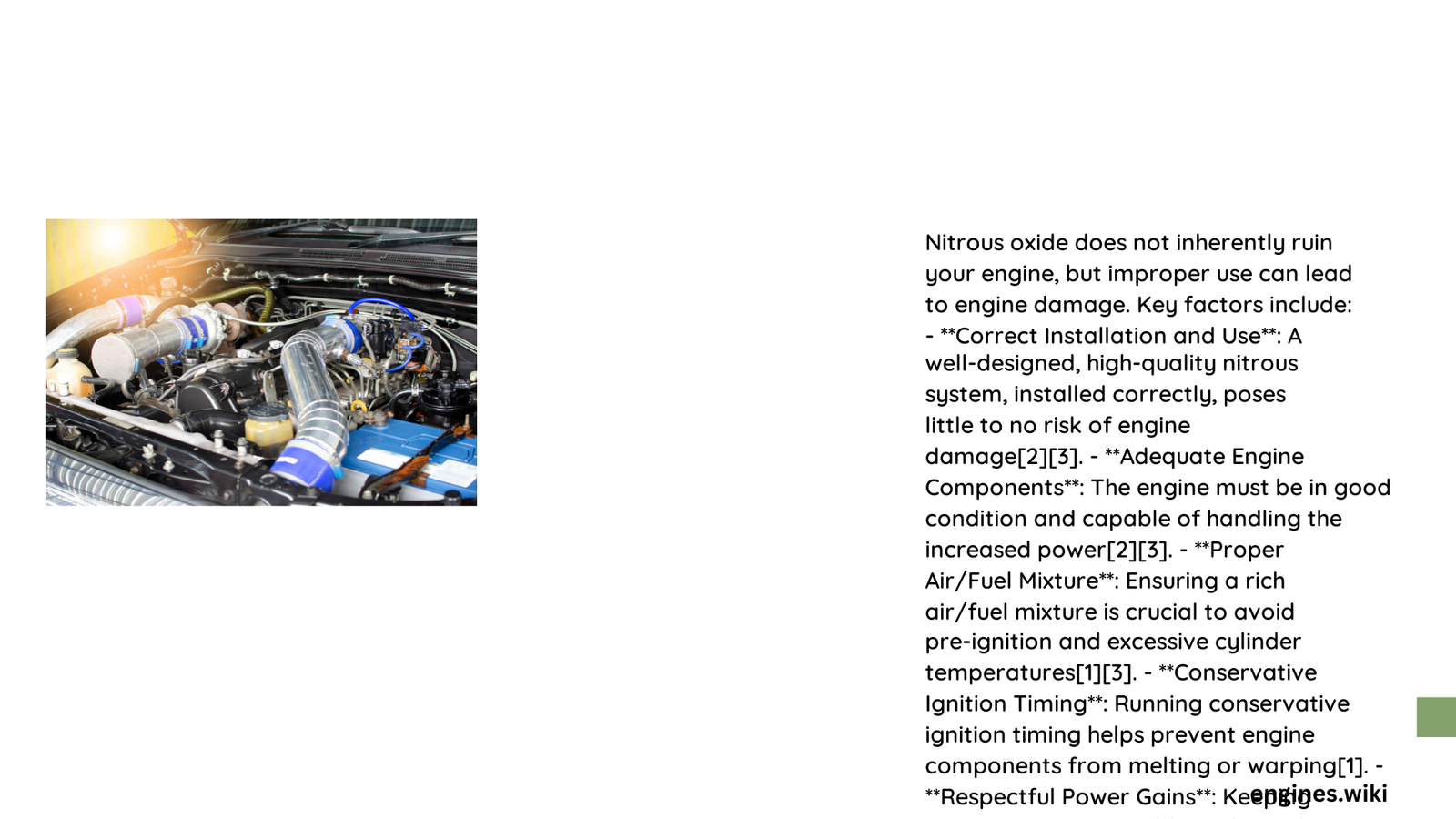Nitrous oxide (NOS) can potentially damage your engine if not properly installed, tuned, and managed. While it offers significant horsepower gains, improper use leads to catastrophic mechanical failures including piston destruction, connecting rod failure, and extreme cylinder pressure complications. Understanding the precise mechanical interactions and implementing strategic tuning techniques are crucial for preventing engine ruination.
What Happens When Nitrous Oxide Enters Your Engine?
Nitrous oxide introduces additional oxygen into the combustion chamber, dramatically increasing potential power output. However, this increased oxygen concentration creates substantial mechanical stress that can compromise engine integrity if not carefully controlled.
How Does Nitrous Cause Potential Engine Damage?
| Damage Type | Potential Consequences | Risk Level |
|---|---|---|
| Piston Failure | Cracking, melting, structural breakdown | High |
| Connecting Rod Stress | Bending, breaking under extreme pressure | Very High |
| Cylinder Head Damage | Warping, cracking from thermal expansion | Moderate |
| Detonation Risk | Premature combustion, uncontrolled explosions | Critical |
What Mechanical Components Face the Highest Risk?
- Pistons: Primary vulnerability due to extreme pressure increases
- Connecting Rods: Structural integrity compromised by sudden force
- Crankshaft: Experiences significant rotational stress
- Cylinder Walls: Potential scoring and heat-related damage
Can Proper Tuning Prevent Nitrous-Related Engine Destruction?

Absolutely! Successful nitrous system implementation requires meticulous attention to several critical parameters:
- Precise Air/Fuel Ratio Calibration
- Advanced Ignition Timing Management
- High-Quality Component Selection
- Strategic Cooling Mechanisms
What Specific Tuning Techniques Protect Your Engine?
Implementing water injection systems can significantly reduce combustion temperatures, mitigating potential detonation risks. Additionally, using colder spark plugs and carefully retarding ignition timing during nitrous activation helps prevent premature combustion.
How Much Power Can You Safely Add?
Most performance experts recommend limiting nitrous oxide activation to:
– 10-15 second continuous bursts
– 50-100 horsepower increments
– Maximum 25% total engine capacity increase
Warning Signs of Potential Nitrous-Induced Damage
🚨 Critical Indicators:
– Unusual knocking sounds
– Inconsistent power delivery
– Excessive exhaust temperature
– Irregular combustion patterns
Recommended Maintenance Strategies
- Regular compression testing
- Frequent spark plug inspections
- Comprehensive cooling system maintenance
- Professional dyno tuning
- High-quality lubricant usage
Final Performance Considerations
While nitrous oxide can dramatically enhance vehicle performance, it demands respect and expertise. Proper installation, continuous monitoring, and conservative usage are paramount to preventing catastrophic engine failure.
Expert Recommendation
“Treat nitrous like a precision surgical tool, not a blunt instrument.” – Professional Racing Engineer
Conclusion
Nitrous oxide doesn’t inherently ruin engines—improper application does. With meticulous preparation, advanced tuning techniques, and disciplined usage, enthusiasts can safely harness substantial performance gains.
